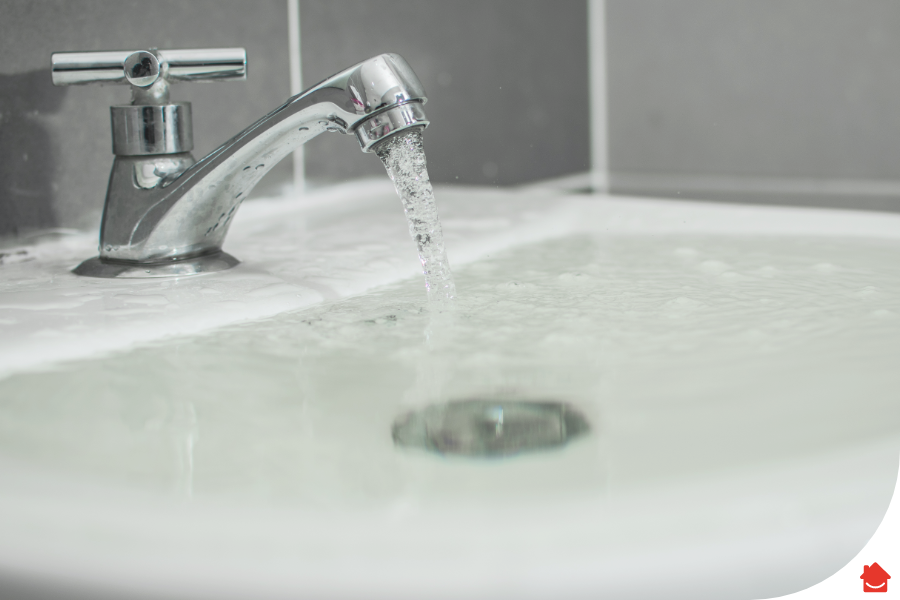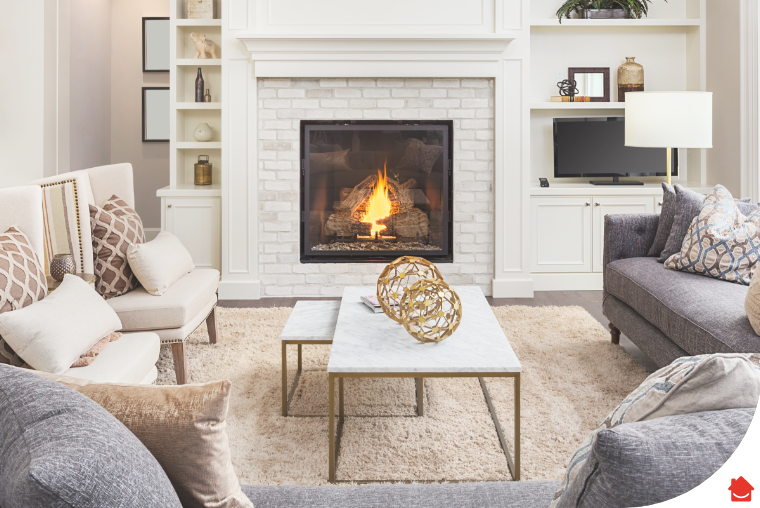We’ve all been there. Sometimes the kids leave the tap running, sometimes it’s us adults. Who or whatever’s to blame, don’t panic. A flooded bathroom is a fairly common situation and knowing the immediate steps to take can minimise the consequences as well as any lasting damage.
This article will cover what to do when you discover a bathroom flood or leak, how to fix it and what to do about water damage.
We do always recommend hiring an experienced professional to find and fix the cause of any leaks, and help avoid causing further damage, so if you’re ankle-deep in water, follow the guide below, then get in touch with us.
Steps to take if your bathroom floods
Here’s what to do as soon as you notice the flood:
1. Quickly identify where the leak is before you shut off the water
Determine the exact source of the flood water. Then if it’s a single fixture like a toilet overflowing, shut it off at the isolation valve. To shut off the mains water supply you must know where your stop tap is (It can be under the kitchen sink, under your cold water tank in the attic or even outside). If you’re a new homeowner, read our article on different types of home water systems, so you know where to find yours.
You can try and fix the leak if you can, but we would recommend calling in a professional plumber for most repairs.
2. Shut off the electricity
Go to your circuit breaker panel to shut off your lighting and sockets circuits, to eliminate the risk of electrocution via your bathroom light or shaver socket. You don’t want to enter a water-soaked environment with outlets and light fixtures still on.
Your fuse box or consumer unit is likely to be under the stairs in a house, or close to the front door in a flat.
3. Remove standing water
Use anything you can – a mop, old towels, newspaper – to absorb the water and get it into buckets or down a drain. If you have a wet/dry vacuum cleaner, use that. If you have severe flooding, you may need to call a water damage clean-up service.
4. Save your possessions
Clear your bathroom cabinets and any other storage in contact with the wet floor. Check these areas for damage, and work out what kind of clean-up they need.
How to clean up following a flood
After you’ve had a serious flood in your bathroom, there are certain precautions to take when removing water and drying your room.
Remove the water
Get rid of the excess water as soon as you can with mops, towels, buckets – and a wet/dry vacuum cleaner will be very useful to you in these circumstances.
Dry the room
Open the windows (and even the cabinet doors). If you’ve removed all the water you can, put a couple of fans in there to get the air circulating and start the drying process. It may take days to get rid of the moisture.
What to do if the flood is in another room
The principles are the same. Act fast to avoid lasting damage, shut off the water and the electricity, remove as much water as possible, then dry out the room.
Common causes of a flooded bathroom
Blocked toilet
If you have a blocked toilet the worst thing you can do is repeatedly flush, as more water will sit on top of the blockage with nowhere to go, but up and out onto your bathroom floor.
You need to isolate the toilet (find its isolation valve or shut off your mains water if needed), then unblock the toilet, possibly with a plunger or a plumber’s snake.
Leaking shower
A leaking shower that creates a flood in the bathroom may involve broken tapware or fittings, it could be a burst pipe behind the wall or it could be a hairline crack in your shower tray.
Again, shut off the water as soon as you become aware of the flooding, then cut the power to the bathroom. Once you’ve mopped up, you can then fix the leaking shower.
Bath flooding
A flooded bath can easily happen in a busy household. What to do? Close the tap as soon as you can, pull out the plug, mop up and save your stuff.
How to prevent it ever happening again? Give yourself five minutes of peace and quiet by keeping an eye on the bath as it fills. If your children are old enough to be left in a room without you, you could even lock the door and do some deep breathing exercises or calmly drink a cup of tea on your own. Go on, you deserve it.
Child flooded the bathroom
Speaking of kids, those little darlings can often be the cause of bathroom flooding. They are known to leave the tap running after washing their hands with the plug in. They do things with wet tissue that we just can’t fathom, getting it down the sink and in the bath drain and overflow.
You’ll sometimes find the odd plastic toy down the toilet and, once children are in the bath themselves, they may decide to create their own tidal wave machine, shunting their bodies back and forth, spraying great splashes onto the floor like a ocean-faring speed boat. Your only solace is that you probably did it too!
Keeping plenty of towels handy and getting them to mop it up themselves may prevent a replay.
Pipe and plumbing issues
A burst or blocked pipe can very easily cause a bathroom flood. Supply lines come into the sink, toilet, bath, behind the shower and even a bidet, so there are plenty of places for pipes to cause issues.
Burst pipes
Burst pipes can be a pinhole leak in your water supply line, or caused by pipes freezing, expanding and cracking in winter and then thawing and leaking.
Avoid this issue by making sure pipes that might be susceptible to freezing are appropriately lagged/insulated.
You may be able to fix a pinhole leak with putty or tape, a repair clamp, or you may have to replace that part of the pipe.
Blocked pipes
Blocked pipes can be caused by hair, soap, wet wipes or tissue going down a drain and building up into a blockage.
Avoid this issue by getting a drain guard (it looks like a mini sieve or colander that you place over the drain). To fix a blocked pipe you may need to use a plumbers snake or if that doesn’t work try a plunger.
What about water damage?
Water damage can start to show in one hour. That’s why it’s important to remove as much water and moisture as you can in a flooded bathroom, as quickly as you can. It’s vital that you tackle water damage quickly before damp and mould issues occur. Signs of water damage include:
- A water damaged ceiling – look all around the room, including the ceiling and walls underneath the bathroom for damp or discolouration.
- Laminate floor water damage – check out the floor covering if you have one.
- Water damaged wall – look all around for damp or discolouration.
- Water damaged skirting boards – wood will warp and eventually rot and crumble if the room isn’t properly dried.
If you detect water damage in your home, the damage may have gone deeper into your home’s substructure. Don’t worry – contact a professional who knows how to deal with water damage and be sure to take photos when you discover the damage, in case you need to claim on your home insurance.
How to avoid flooding
Protect your family from these kinds of emergencies
Plumbing disasters do happen, however, to help protect your family from emergencies like bathroom floods, make sure you’re covered with HomeServe’s emergency cover. On good days and bad days, we’re here to help.
FAQs
How do you dry out a flooded bathroom?
- Pump, mop, towel dry and wet vacuum everything in sight until there’s no more standing water.
- Now get the air circulating – use fans, open windows, open the cupboard doors.
How do you fix a flooded bathroom?
- Stop the source of the flood as quickly as possible.
- Cut electrical power to the bathroom for safety.
- Remove all standing water with a pump, mop, towels, wet vacuum.
- Get the air circulating (open windows and cupboards, fans).




